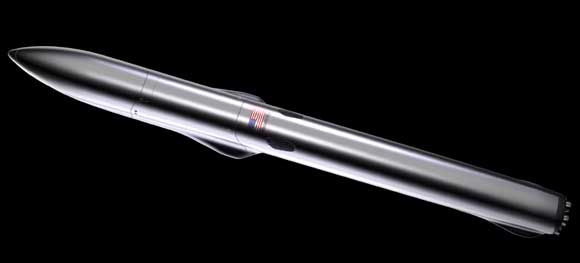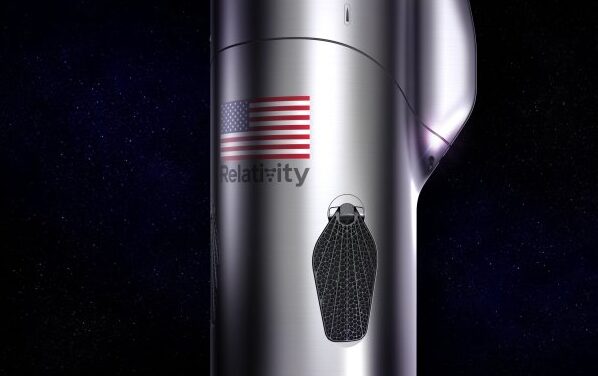
A Closer Look At Relativity Space’s Terran R Launch Vehicle
Many different private space companies are working on new and ambitious projects for the future. These projects are often very unique, innovative, and try something completely new to the industry. Relativity Space has been working hard on its Terran 1 launch vehicle but has even bigger plans with Terran R.
Terran R is in between a heavy and medium-lift launch vehicle coming in at 66m tall with an estimated payload to low Earth orbit of 20,000kg. Terran R is meant to consistently provide cost-effective and efficient launches. Relativity Space plans to do this with full reusability, inspiration from nature, and reducing the necessary parts. All of which will help speed up and lower costs when launching Terran R.
Relativity Space is still very early in development however the company has no shortage of impressive goals. The private company’s work with 3D printing could revolutionize the future of the space industry. Specifically, launch vehicles such as the Terran R could change how we build and launch rockets in the future.
Relativity Space Background

Relativity Space is a private space company that was only recently founded in 2015. The company is working to revolutionize how we create and launch rockets. Similar to other companies such as SpaceX, Relativity Space envisions a future where humans are multi-planetary. Their long-term goal is to upgrade humanity’s industrial base on Earth and Mars. Relativity also operates multiple production, launch, and test sites throughout the United States. This has helped not only with the production process but also through working with different partners such as NASA or the U.S. Air Force.
One of the aspects of Relativity that make the company stand out is its production process. The company is innovating and putting a lot of effort into 3D printing technology. They want to 3D print entire rocket sections, components, engines, and more. The company owns the world’s largest 3D printers capable of printing entire rocket sections. Relativity Space has not launched a rocket yet but is working towards a first launch date in 2022. This would be with the Terran 1 rocket. This is a small-lift launch vehicle that is currently under development. This launch vehicle is the step prior to developing and creating the Terran R. Both rockets are primarily 3D printed and are very innovative. This is meant to lower costs, speed up production, and increase access to space.
Terran R Features

Full Reusability – One of the first impressive features of Terran R is full reusability. Throughout the space industry, we are starting to see more and more companies working towards the goal of full reusability. This is due to the long list of benefits, mainly including cost and launch speed. Terran R consists of two stages. Both are being designed to safely return to Earth after the launch and land so they can be reused. The booster has a set of four grid fins at the very top and two strakes close to the bottom. All of which are meant to help orient, steer, and control the booster when descending back towards Earth. Powering the booster are 7 Aeon R engines. One or more of these engines will ignite and slow the booster down prior to a landing.
Then you have the second or upper stage. The second stage will be fully reusable along with the payload fairings. These will carry and release up to 20,000kg of cargo into low Earth orbit before returning to the surface. If successful, Terran R could provide limitless benefits to Relativity Space and the general space industry. The combination of full reusability with an entirely 3D-printed rocket means a significant reduction in cost, production time, and launches. This would allow the company to consistently launch the Terran R for a very affordable cost. Additionally, If Relativity Space can avoid needing to do a lot of refurbishment after a landing, this would only speed up the process.
Inspiration From Nature – Another unique aspect of Terran R is its inspiration from nature. When designing the Terran R Relativity Space wanted to make a sleek and efficient design. When gathering inspiration they looked at nature for ideas they could transfer to a next-generation rocket. Terran R has unique aerodynamic features with algorithmically generated and optimized structures. This is another big benefit of the 3D printing process. The printing process is enabled by software and data-driven manufacturing, exotic 3D printed materials, and unique design geometries that are not possible with traditional manufacturing, driving a faster rate of compounding progress and iteration in the industry.
In simpler terms, the use of 3D printing has allowed Relativity Space to design and create unique materials and components of Terran R that would previously not be feasible or possible with standard manufacturing. One of the more obvious parts of Terran R where you can see the inspiration from nature is in the grid fins. The shape along with the internal mesh of metal resembles something you would see in nature. This design will likely reduce as much weight as possible while increasing the control and aerodynamics of the grid fins.
Reduction In Parts – The final part of Terran R that is unique and beneficial is the reduction in parts. Relativity Space mentions that Terran R has 100x fewer parts than standard rockets and launch vehicles. This would provide a lot of benefits to the manufacturing and launch of Terran R. Looking at the launch process a reduction in parts could help add strength and reduce errors or mishaps. Each new part or section of a rocket is an additional place where a failure could happen. One of the best parts is no part. This could help ensure Terran R has a great track record in the future.
The manufacturing process is also significantly simplified. Looking at your average launch vehicle it’s composed of many different parts. The main body for example is multiple large sections usually welded together. Relativity Space is trying to avoid this process altogether. Thanks to 3D printing, the private company is confident they can print practically entire main sections of rockets in a single go. They are also working to 3D print and simplify rocket Engines. By fusing 3D printing, artificial intelligence, and autonomous robotics, Relativity is printing its rockets’ structure and engines. This will significantly reduce touchpoints and lead times, simplifying the supply chain, and increasing overall system reliability. Specifically, partially thanks to the reduction in parts, Relativity Space is aiming to produce Terran R in 60 days from raw materials.
Conclusion
Relativity Space is working hard to try and innovate and create something unique in the space industry. One of the projects that are a perfect example is the Terran R. This is a two-stage medium-lift launch vehicle meant to carry around 20,000kg into low Earth orbit. There are three main things that are special about Relativity Space’s next-generation rocket. These include full reusability, inspiration from nature, and reduction in parts. All of which work to reduce cost, production time, manufacturing, complications, launch time, and more. One of the ways the private company is doing this is with 3D printing. They are attempting to use 3D printing in the creation of entire rockets, parts, and sections. If successful it could change how companies and agencies create launch vehicles and components in the space industry. Terran R’s first launch is planned for 2024. We will have to wait and see how development goes and the impact Terran R has on the future.
